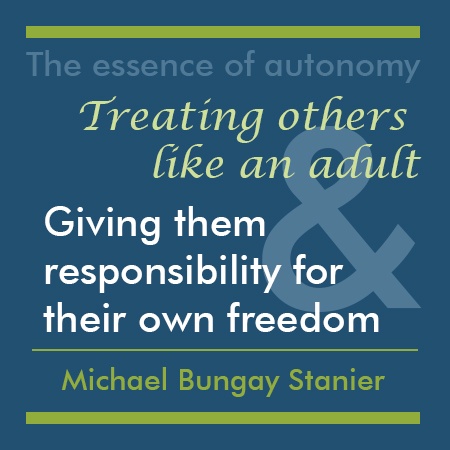Adapting CBT for Justice-Involved Clients - Check out the Blog Series!
Posted by Raymond Chip Tafrate, PhD, Damon Mitchell, PhD, & David J. Simourd, PhD on 3/13/20 6:00 AM
Topics: Assessment, Community Corrections Professional, Addiction, Relapse Prevention, client development, Developing a practice model, coaching community corrections clients, reentry, client needs and values, risk, EBP, Justice-Involved Clients, jic
What’s Behind the Box?
Posted by Raymond Chip Tafrate, PhD, Damon Mitchell, PhD, & David J. Simourd, PhD on 10/17/19 10:13 PM
Risk Assessment is Not the Same as Case Formulation
We would like to start with a story. Picture a courthouse in a struggling industrial town in Connecticut. The adult probation department is situated in the basement of this courthouse. We are beginning training with a new cohort of probation officers, teaching them how to incorporate forensic CBT techniques into their work. To start, one of the officers describes a current case and reviews the available assessment information. A quick review of the risk assessment reveals this is a high-risk case; a major area of concern is antisocial companions. We ask the officer to explain how friends and companions specifically influence criminal behavior for this justice-involved client (JIC). We get crickets! We ask, what role did friends play in the most recent offense? Again, an awkward silence permeates the room. While the officer certainly knows that antisocial companions is a risk factor for reoffending, she has not explored the nature of the JIC’s relationships and discussed with the JIC the specific role of companions in his offense history and daily routines. Unfortunately, this is a common training scenario when we begin.
Read MoreTopics: Assessment, Developing a practice model, coaching community corrections clients, client needs and values, risk, Justice-Involved Clients, jic
The Foundation of Coaching: Respecting Autonomy
Posted by Evan C. Crist, Psy.D. on 9/13/18 7:44 PM
The first three questions of The Coaching Habit: Say Less, Ask More & Change the Way You Lead Forever that are discussed Kickstarting a Coaching Session, Coaching with the AWE Question, and The Coaching Habit of Creating Focus, work together to create focus and define what the client sees as the central problem. As we have discussed earlier, it is tempting to believe that your work is primarily done once the problem is solved. The Advice Monster will see a clear definition of the problem as an opportunity to solve it, look brilliant and move on to the next problem. No patience, process or angst required. Most of us went into this field due to our passion to help others. Somehow along the way, we learned that helping others means attempting to solve problems for them. Well intentioned but well off the mark. “What is the real challenge here for you?” isn’t the beginning of the end, it is the end of the beginning. The first half of the coaching process is defining the problem. The second half is identifying the solution. That process begins with a simple (but not easy) question?
Read MoreTopics: The Coaching Habit, Michael Bungay Stanier, Evan C. Crist, coaching community corrections clients
The Coaching Habit of Creating Focus
Posted by Evan C. Crist, Psy.D. on 8/14/18 11:44 AM
After cutting through the fog of small talk and vague concerns with the Kickstart Question and a series of And What Else? questions, you have narrowed the focus. Perfect. Time to fix it, right? Wrong. It is time to slow down your urge to believe your brain that you know the problem and have the solution. Narrowing the focus is different than specifically defining the problem. You are getting closer but aren’t there yet.
The third question in Michael Bungay Stanier’s The Coaching Habit: Say Less, Ask More and Change the Way You Lead Forever is the Focus Question. “What’s the real challenge here for you?” We’ve addressed the danger of the Advice Monster in a previous blog and it is most likely to attempt to take over the discussion here. Your frontal lobe is now convinced it fully understands the issue and the advice monster is eager to do its bidding. The Advice Monster impulsively disagrees with a basic tenet of therapeutic intervention; It is our job to expose the client’s values and desires, not to impose our values and desires. Unsolicited advice is an attempt to impose our values on a client. You are in good company. We all have that urge. Instead, let’s find out what the real challenge is for them at this moment.
Read MoreTopics: client development, The Coaching Habit, Evan C. Crist, coaching community corrections clients, client needs and values, the awe question
Coaching with the AWE Question
Posted by Evan C. Crist, Psy.D. on 7/18/18 12:28 PM
“And what else?” is perhaps the most important question in the The Coaching Habit: Say Less, Ask More and Change the Way You Lead Forever. While technically the second question presented, it should be the most oft repeated question by far. According to the author, Michael Bungay Stanier, the AWE question works like magic, and he declares it to be the “The Best Coaching Question in the World.” He explains, “With seemingly no effort, it creates more – more wisdom, more insights, more self-awareness, more possibilities – out of thin air.”
It is a challenge to develop the habit of asking this question because your Advice Monster will discover the problem and the solution to the problem very quickly. The human brain does not like ambiguity and pushes us to find clarity, the quicker the better. Like most unhelpful habits, awareness that you have an Advice Monster is a critical first step. The recovery process is simple but not easy. Whenever you feel the urge to offer advice, insert “And what else?” in its place. (I purchased an ugly cartoon monster for all of my staff and we all have it on our desk as a reminder that the Advice Monster is alive, well and eager to take over as soon as you let your guard down.)
Read MoreTopics: Listening Skills, The Coaching Habit, coaching community corrections clients, reaching clients emotions
Subscribe To Our Blog
Recent Posts
Posts by Topic
- Community Corrections (61)
- Evidence Based Practices (44)
- Community Corrections Professional (23)
- Software (15)
- Practices (12)
- Change (11)
- Technology (10)
- Risk Principle (8)
- reentry (8)
- probation staff (7)
- EBP (6)
- Outcomes (6)
- client development (6)
- client needs and values (6)
- coaching community corrections clients (6)
- Assessment (5)
- Community (5)
- Developing a practice model (5)
- Justice-Involved Clients (5)
- Remote work (5)
- The Coaching Habit (5)
- parole (5)
- risk (5)
- tele-supervision (5)
- tele-work (5)
- Community Engagement (4)
- Evan C. Crist (4)
- Community Corrections Client Services (3)
- Criminal Justice Reform (3)
- Implementation (3)
- Listening Skills (3)
- Motivational Interviewing (3)
- Policy (3)
- Positive Reinforcement (3)
- Practice Models (3)
- high risk client (3)
- reaching clients emotions (3)
- responsivity (3)
- Addiction (2)
- BOP (2)
- Conferences (2)
- ICCA (2)
- Management (2)
- Michael Bungay Stanier (2)
- Relapse Prevention (2)
- halfway house (2)
- jic (2)
- principles (2)
- procedures (2)
- program results (2)
- APPA (1)
- Appreciative Thinking (1)
- Brian Lovins (1)
- COVID-10 (1)
- Community Connection (1)
- Coronavirus (1)
- Crisis (1)
- Customer Service (1)
- Data Management (1)
- Fidelity (1)
- ICCA Seattle (1)
- Juvenile Corrections (1)
- Leadership (1)
- Monitor History (1)
- Opioid Addiction (1)
- Opioid Crisis (1)
- Orange is the New Black (1)
- Program Data (1)
- Reforms (1)
- Relapse (1)
- Second Chances (1)
- Switch by the Heath Brothers (1)
- Treatment (1)
- drug testing (1)
- going paperless (1)
- govcio outlook (1)
- impact sessions (1)
- innovation (1)
- intrinsic motivation (1)
- justice reinvestment (1)
- marijuana testing (1)
- money savings (1)
- opiod testing (1)
- paperless office (1)
- purpose (1)
- remote working (1)
- resources (1)
- sanction (1)
- staff productivity (1)
- technology solutions provider (1)
- the awe question (1)
- what works (1)
- what's on your heart (1)
- work from home (1)






